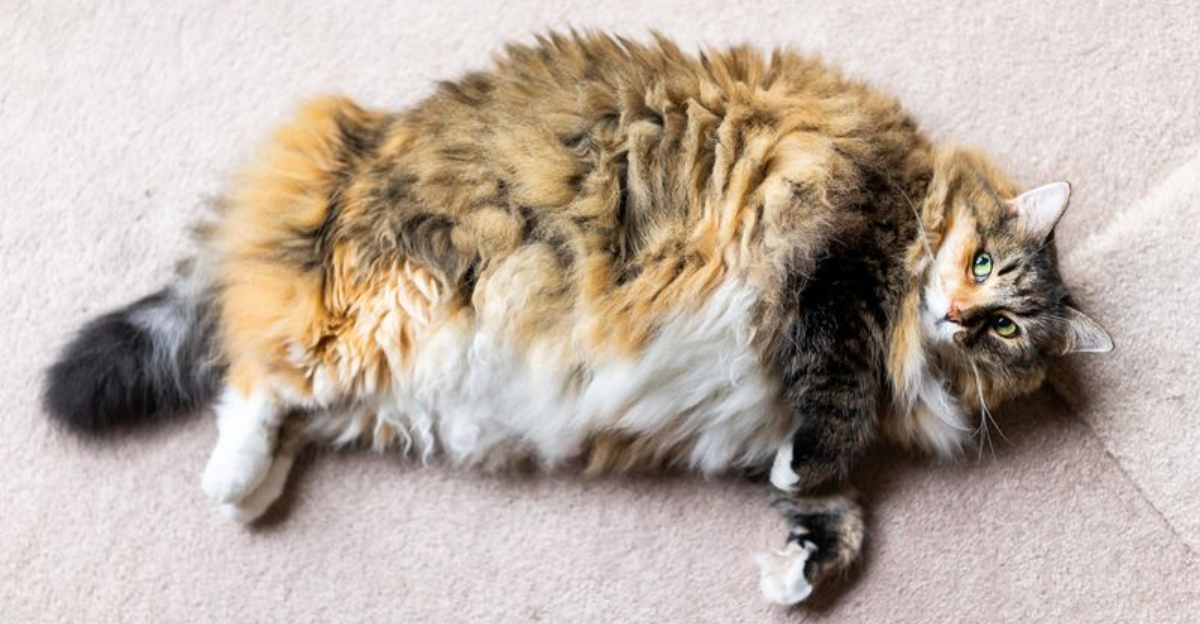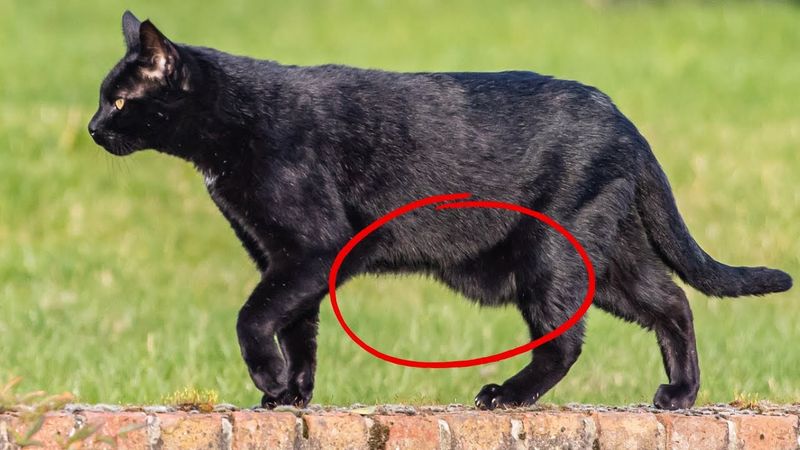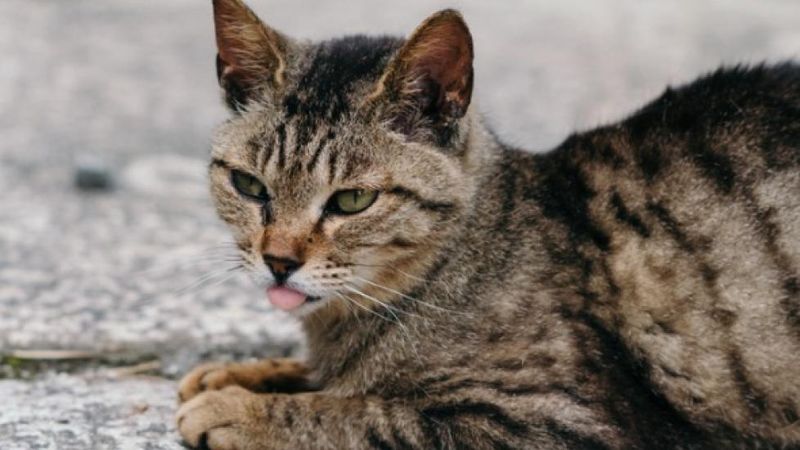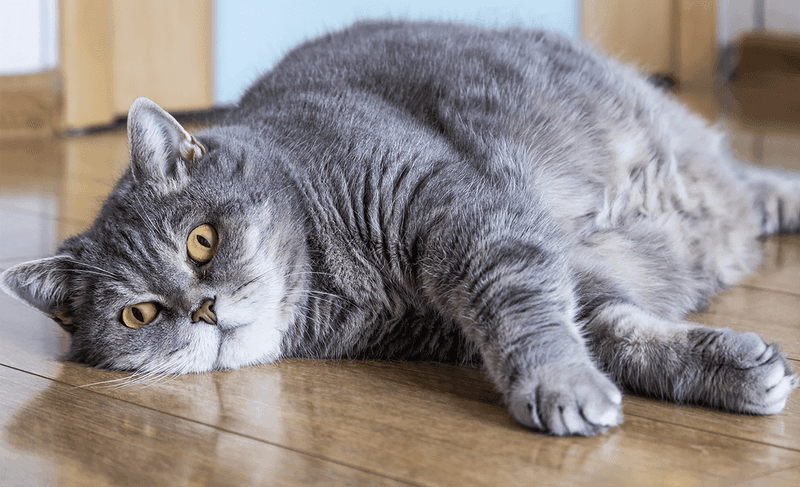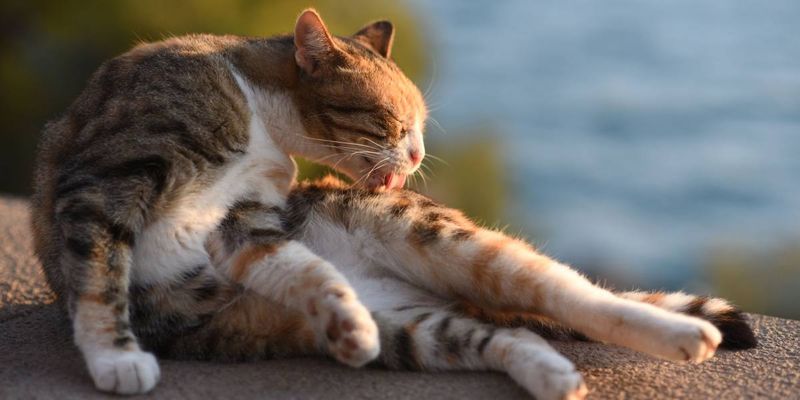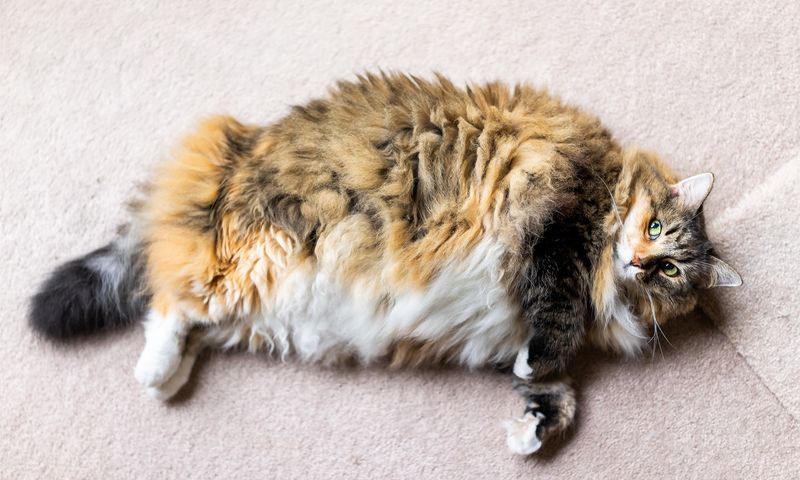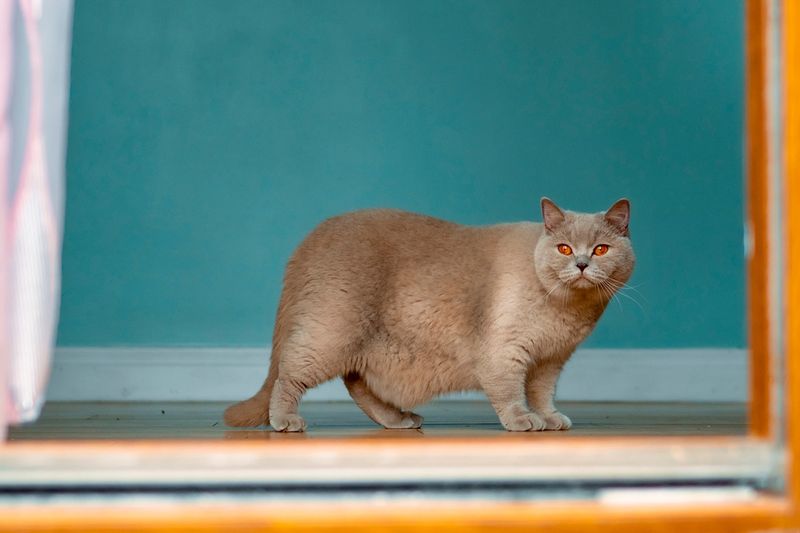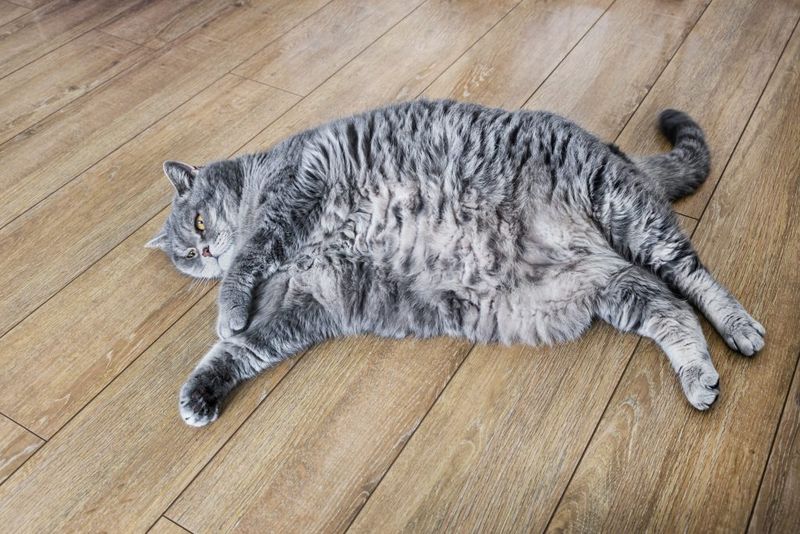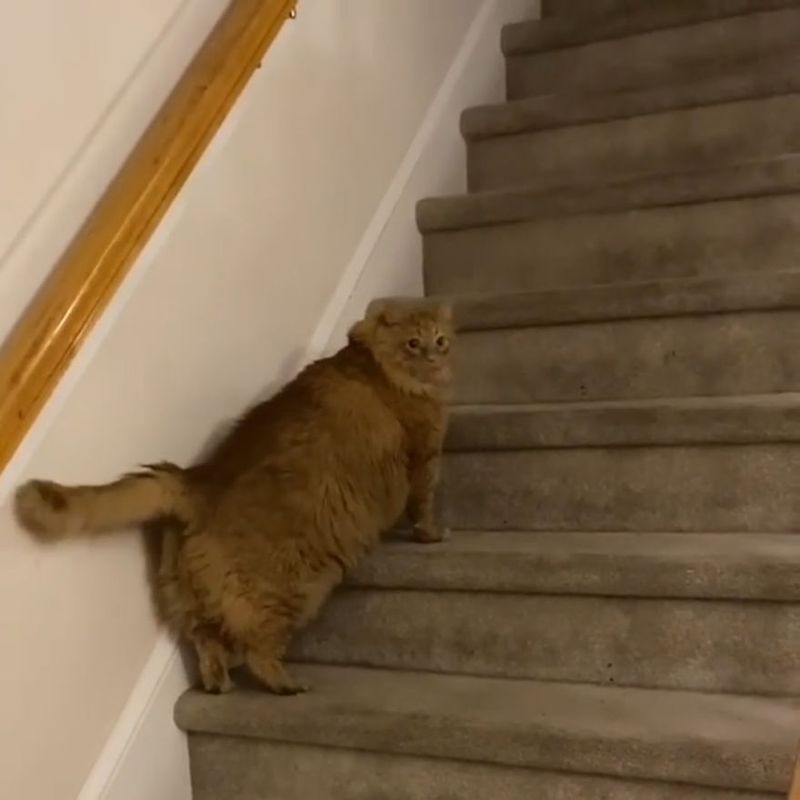📖 Table of Content:
Cats, often adored for their playful antics and gentle purrs, can sometimes tip the scales more than they should. Obesity in cats is not merely an aesthetic concern but a health issue that can lead to numerous complications. Recognizing the signs that your feline friend needs to lose weight is the first step in supporting their journey to better health. This guide outlines ten clear indicators that your cat may need to shed some extra pounds, along with practical tips on how you can assist them in achieving a healthier lifestyle.
1. Struggling to Jump
Does your cat hesitate before jumping onto its favorite perch? A cat struggling to leap is a poignant sign of excess weight. Cats, agile by nature, should gracefully jump with ease. When the extra pounds hinder this natural agility, it can be distressing both for the cat and the owner. Encouraging playtime with feather wands or laser pointers can gently increase activity levels. Additionally, evaluating their diet and reducing high-calorie treats can be beneficial. A healthy, balanced diet paired with playful exercises can help restore their natural grace and liveliness.
2. Visible Fat Pouches
Have you noticed fat pouches hanging from your cat’s abdomen? These pouches, often called ‘feline fat pads,’ indicate that your cat might be carrying excess weight. While some padding is natural, pronounced pouches may hinder mobility and lead to health issues. To help reduce these, consider introducing a low-calorie diet and increasing regular exercise. Monitoring portion sizes and using food puzzles can also encourage slower eating and increase activity. Supporting your cat in shedding these fat pads can enhance their vitality and contentment.
3. Heavy Breathing
Is your cat panting or breathing heavily during mild activities? Unlike dogs, cats don’t usually pant after exertion. Heavy breathing can signal that your cat is carrying extra weight, possibly affecting their respiratory health. Consulting a vet to rule out other medical conditions is vital. Incorporating gentle play and controlled feeding can gradually improve their stamina and reduce weight. A combination of a healthier diet and increased activity can restore your cat’s breath to a gentle purr, ensuring they live comfortably.
4. Low Energy Levels
Once a playful ball of energy, does your cat now seem uninterested in playtime? Low energy levels might be indicative of excessive weight. Overweight cats often lack the enthusiasm for activities they once enjoyed, leading to a cycle of inactivity and further weight gain. Integrating interactive toys and dedicating time for daily play can spark their interest. Adjusting meal plans to include nutritious, lower-calorie options also aids in weight management. By revitalizing their energy levels, you can help reignite your cat’s zest for life.
5. Difficulty Grooming
Notice your cat struggling to clean itself? Difficulty in grooming is a tell-tale sign that your cat might be too heavy. Cats are known for their meticulous grooming habits, and when weight hinders this, it can lead to hygiene issues. Regular brushing by the owner can assist, alongside implementing a weight reduction plan. Tailoring their diet to manage weight and ensuring they stay active with toys or climbing structures can help. Achieving a healthier weight will allow your cat to resume its grooming rituals with ease and elegance.
6. Changes in Behavior
Has your cat’s temperament changed recently? Irritability or withdrawal may be linked to discomfort from extra weight. Overweight cats may feel physically restricted, impacting their mood and behavior. Observing these changes can provide clues about their well-being. Engaging your cat with mentally stimulating toys or puzzle feeders can offer enrichment and reduce stress. A balanced diet, gradually adjusted, alongside vet consultations for tailored advice, can foster a happier disposition, reviving their curious and friendly nature.
7. Joint Stiffness
Does your cat exhibit stiffness or reluctance to move? Joint stiffness, often due to excess weight, can severely impact mobility. Cats are creatures of grace and flexibility, and weight-induced joint issues can diminish this natural elegance. Providing joint supplements after vet consultation and encouraging gentle exercises can alleviate discomfort. Transitioning to a weight-supportive diet further aids in reducing strain on their joints. By addressing these issues, your cat can regain its fluid movements, enjoying climbing and exploring once more.
8. Increased Sleeping
Is your cat sleeping more than usual? Increased sleep can be a sign of weight-related lethargy. Though cats love their naps, excessive sleeping might indicate they’re not getting the exercise they need. Creating an engaging environment with climbing trees or tunnels can encourage movement. Monitoring their food intake and opting for weight control formulas can support their journey to a healthier lifestyle. Encouraging an active routine will ensure they wake up from their naps refreshed and ready for adventure.
9. Tight Collars
Does your cat’s collar seem tighter than before? Tight collars are a subtle indication that your cat may have gained weight. Regularly checking collar fit ensures your pet’s comfort and can alert you to weight changes early on. Transitioning to a controlled diet and increasing physical activities are effective strategies to address weight gain. Interactive play sessions and reducing calorie-dense foods can help manage their weight efficiently. A properly fitted collar will reflect their healthy progress, symbolizing comfort and care.
10. Difficulty Climbing Stairs
Does your cat hesitate or struggle when climbing stairs? Difficulty in navigating stairs can be a clear sign of excess weight affecting their mobility. Stairs, once conquered with ease, may become daunting with added pounds. Encouraging weight loss through structured exercise routines and diet modifications is key. Offering rewards for gentle stair exercises and monitoring food portions can assist in this process. As your cat sheds the weight, they’ll begin to tackle stairs with newfound confidence and agility, showcasing their natural athleticism.
